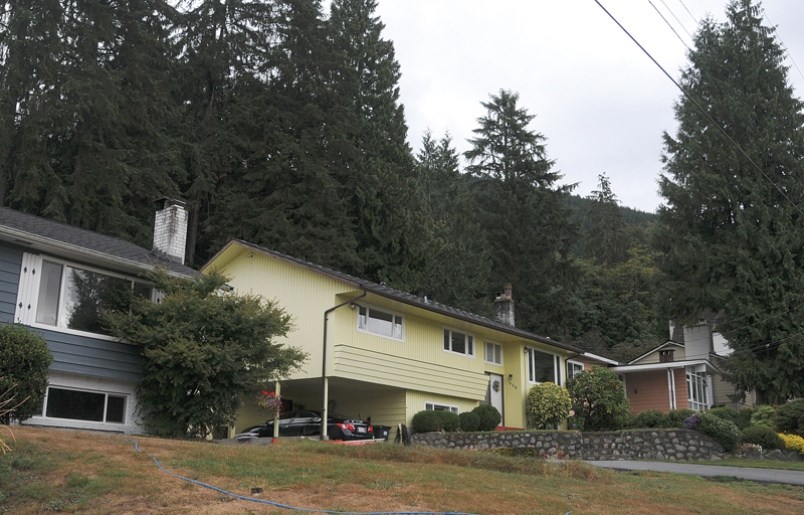We stand, hoping to be divided.
That was the message several Upper Capilano residents delivered to District of North Vancouver council Monday as they trumpeted a policy that would allow 59 new lots to be created in the neighbourhood.
The area is bordered by Cliffridge Avenue and Belvedere Drive, and includes lots on Prospect and Clements avenues, as well as Canyon and Montroyal boulevards.
Council voted unanimously to advance the proposal – which would allow for 138 lots to be cut into 197 lots – to a public hearing set for Jan. 16, much to the delight of Canyon Boulevard resident Claudia Cornwall.
“We can rejuvenate the neighbourhood, have greener and more efficient houses by passing this law,” she said.
Many of the homes in the neighbourhood were constructed in the 1950s and ’60s, and are currently at their “best-before date,” according to Cornwall.
As the old bungalows disappear, monster homes will creep into the neighbourhood, argued longtime resident Andrew Westwell-Roper.
“It would seem that the monster house lobby is alive and well and operating in our area,” he said. “Council could show no greater disrespect to our neighbourhood at this time than by failing to approve the (single-lot infill areas) motion.”
His position was echoed by Greg Cameron, who punctuated his presentation to council by showing them an advertisement for a 5,700-square-foot, six-bedroom, nine-bathroom home for sale in the area.
“The status quo is one choice that is certainly not available,” he said, suggesting turning 66-foot lots into 33-foot lots will allow for new houses that are more sensitive in scale to the neighbourhood.
Cameron’s comments seemed to resonate with Coun. Jim Hanson.
“As far as I’m concerned, nine bathrooms is just too many,” Hanson said.
While the divided lots will still be pricey, the move is nonetheless a step toward offering more affordable family housing, according to Hanson.
Less certain was Mayor Richard Walton, who suggested the end result might be: “splitting an existing house that’s worth $1.8 million and putting two more houses on that are worth $1.8 million each.”
Council’s efforts might be better spent establishing multi-family housing along bus routes as opposed to splitting lots in residential areas, Walton said.
Property owners would still undergo a regulatory process before subdivision could be approved. The district generally approves three or four subdivisions each year, according to a district staff report.
While Coun. Roger Bassam expressed misgivings about tinkering with the free market, he ultimately supported the motion.
“It is a better land-use decision to have smaller lots with reasonable houses,” he said, suggesting the community enjoyed a less than “tremendous value” from 5,700-square-foot homes.
The zoning change could extend farther, Bassam said, making the case that small-lot infill is a good fit for the area between Capilano Road to the west and Ranger Avenue to the east.
“I recognize we’ve picked a much smaller part of that particular neighbourhood,” he said. “Sometimes in politics you take what you can.”
Coun. Mathew Bond offered a counterpoint to Bassam, reminding the gallery that zoning is an “intervention in the free market,” and that the intervention must be good for the community.
The change would allow homeowners to “impose a smaller footprint,” while benefiting the community at large, according to Coun. Robin Hicks. “It’s the right thing to do to accommodate more people,” he said, adding the district would: “probably get more property tax and utility fees out of this as well.”
Infill housing is a “more efficient way” to offer services such as water, storm sewers, and street lighting by squeezing more taxpayers into the same distance of linear infrastructure, according to a district staff report. “This means infill housing is an overall financial benefit to the district,” the report noted.
The potential zoning includes 12 lots in a slope hazard area. However, the same development permit guidelines would apply to ensure the property would be safe before construction could begin.
Once fully built out, district staff estimates the infill area would bring 60 more vehicles per hour through the neighbourhood during the afternoon rush.
Couns. Lisa Muri and Doug MacKay-Dunn did not attend Monday’s meeting.



